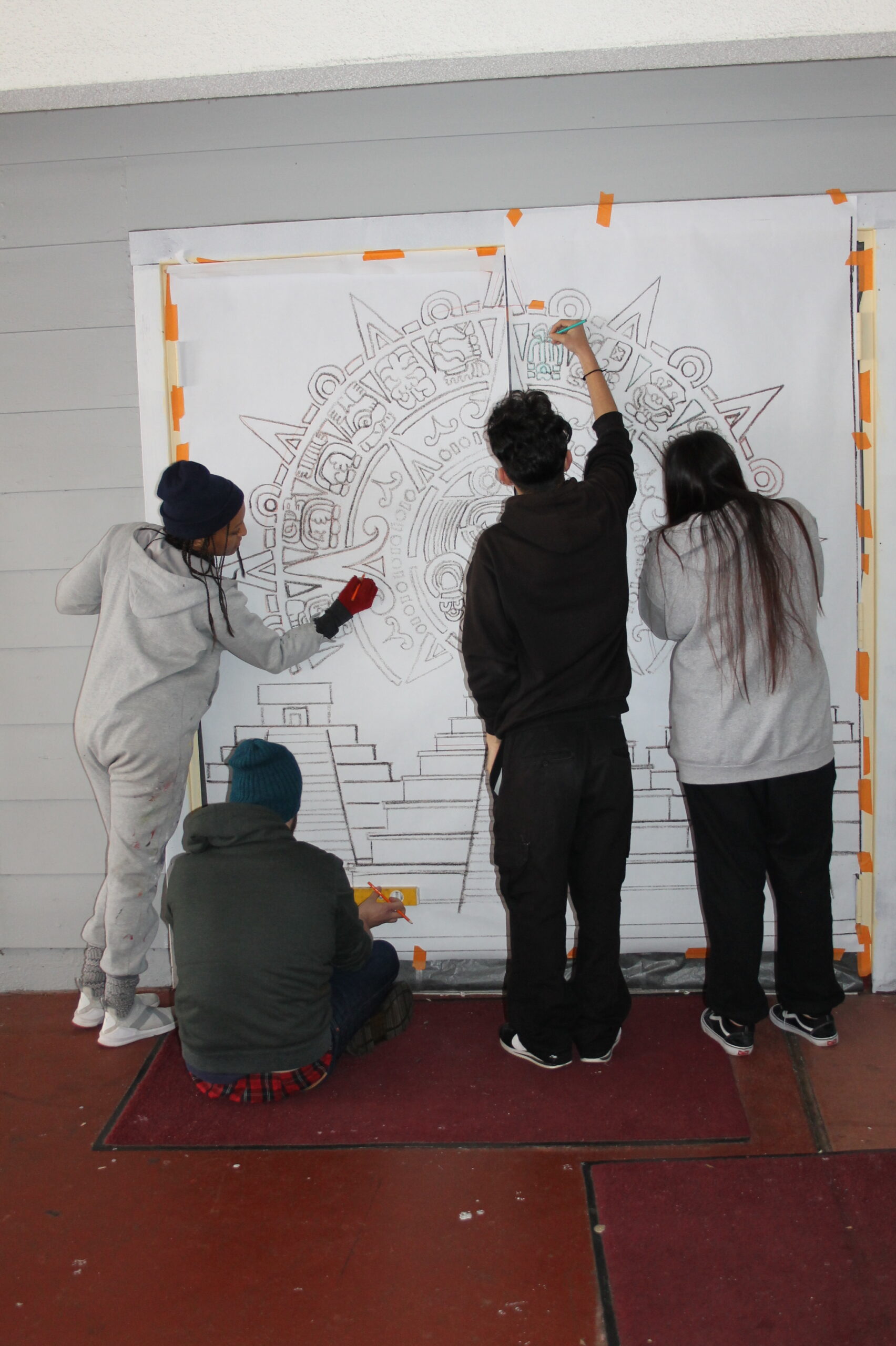
Art
What is art? Art can serve many purposes, and can be defined in various ways. One definition is any specific skill or its application. Another meaning of the term can be any creative work, making or doing things that display form, beauty, and unusual perception. Art includes painting, sculpture, architecture, music, literature, drama, and dance. Art can also mean a special ability to do something easily.
Besides the more precise definitions of art, the word art relates to an activity in which a human being makes or does something that is creative and beautiful. For example, a person can paint, draw, sketch, design, or sculpt an object. I believe that all people have some type of artistic ability and we will work together in this class to develop yours.
This course is an introduction to visual art. Students who have taken art previously as well as students who have never had an art class will learn about creativity, imagination, studio behavior, the elements of art and the principles of design. Students will do independent and group projects, assignments that emphasize color, composition, painting, collage and a variety of materials. Art from other cultures, art history and the work of well-known artists will be studied.
For more information about the Marin Oaks Art program, please click here.
Course Goals
Introduction to Art students will:
• Perceive and respond to works of art, objects in nature, events, and the environment
and in works of art, including their own.
• Analyze the role and development of the visual arts in past and present cultures
throughout the world, noting human diversity as it relates to visual arts and artists.
• Apply artistic processes and skills, using a variety of media to communicate meaning
and intent in original artworks.
Course Objectives
Standard 1.0 – Artistic Perception: Processing, analyzing, and responding to sensory information through the language and skills unique to art.
Develop Perceptual Skills and Visual Arts Vocabulary
1.1 Identify and use the principles of design to discuss, analyze, and write about visual aspects in the environment and in works of art, including their own.
1.2 Describe the principles of design as used in works of art, focusing on dominance and subordination.
Analyze Art Elements and Principles of Design
1.3 Research and analyze the work of an artist and write about the artist’s distinctive style and its contributions to the meaning of the work.
1.4 Analyze and describe how the composition of an artwork is affected by the use of particular principle of design.
Impact of Media Choice
1.5 Analyze the materials used by a given artist and describe how its use influences the meaning of the work.
1.6 Compare and contrast similar styles of artwork done in electronic media with those done in traditional visual arts materials.
Standard 2.0 – Creative Expression: Creating, Performing, and Participation in the Visual Arts
Skills, Processes, Materials, and Tools
2.1 Solve a visual arts problem that involves the effective use of the elements of art and principles of design.
2.2 Prepare a portfolio of original two and three-dimensional artworks that reflect refined craftsmanship and technical skills.
2.3 Develop and refine skill in the manipulation of digital imagery (either still or video).
2.4 Review and refine observational drawing skills
Communication and Expression Through Original Artwork
2.5 Create an expressive composition, focusing on dominance and subordination.
2.6 Create a two or three-dimensional artwork that addresses a social issue.
Standard 3.0 – Historical and Cultural Context: Understanding the Visual Arts in Relation to History and Culture
Role and Development of the Visual Arts
3.1 Identify contemporary styles and discuss the diverse social, economic, and political developments reflected in the artworks examined.
3.2 Identify contemporary artists worldwide who have achieved regional, national, or international recognition and discuss ways in which their work reflects, plays a role in, and influences present-day culture.
Diversity of the Visual Arts
3.3 Investigate and discuss universal concepts expressed in artwork from diverse cultures.
3.4 Research the methods art historians use to determine to time, place, context, value and culture that produce a given work of art.
The curriculum is based on the California State Standards for Introduction to Art. For access to the full text of the standards, go to www.nusd.org.
Texts and Supplemental Materials
1. https://artsdesignmsb.weebly.com/about.html
2. The Visual Experience, Jack Hobbs and Richard Salome, CDavis Publications, Inc. 1991
3. Other books, videos and materials as deemed necessary
